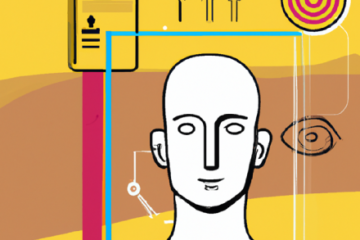Ingrid Lindberg: The Future of Work #EXdrivesCX
VOICE OF EXPERTS
The Future of Work

If you’ve been hanging out with us for any amount of time, you know what we believe:
- Real-life practice beats theory every time.
- #EXdrivesCX.
- No Culture, No Customer.
- #CXandLove go hand in hand.
And our newest belief, one that’s always been core to what we practice, but has become even more important in current times:
- Hope will not be cancelled.
Thank you for the fabulous response to our last blog post titled: STOP asking your employees if they want to go back to the office. We even were highlighted by LinkedIn as the article to read!
That statement (and our thinking behind it) has gotten us invited to a ton of webinars and podcasts about VOE (voice of employee) and the future of work.
None of us have a magic crystal ball to stare into that has all the answers, but here are our thoughts on how you can better tackle listening to your employees and what the future of work will look like.
I’m breaking them out into five main categories:
- Voice of employee.
- Connectivity.
- Work/life balance.
- The workspace.
- Performance.
Voice of employee
Over the years, we’ve learned a lot about the right questions to ask your customers. We’ve talked before about why NPS (Net Promoter Score) doesn’t work, and how to find the Metric that Matters to your organization.
We, as an industry, have spent billions of dollars on metrics. We’re metrics superheroes! Yet, we still don’t seem to have figured out how to take all those amazing tools that we’ve built to gauge the pulse of our customers and apply it to our employees.
We know we can’t let an account manager ask a client how they feel about the relationship. Why not, you ask? Well, because you’re asking someone to grade a person that they have a personal connection to. I may strongly dislike your company, but I love my account manager, and I don’t want them to take the blame. Or I may really like my account manager but I’ve noticed that they’ve been slipping over the years — taking our relationship for granted. It’s really hard to rate a person that you have a relationship with. That’s why market research firms exist. Unbiased third parties who can ask those questions for you.
We also know that asking employees a single question doesn’t work. It’s a great rallying cry, but it doesn’t get to the root of all the things you need to know. Ethnography (learning and understanding the customs and culture of an individual or group) is key.
Open-ended conversations about how people are feeling and what their challenges are can give you information at both the macro (company) and micro (leader) level. Yes, we know — open-ended questions are a beast to synthesize. But how else will you find out how your people are really doing?
Some questions to start those conversations:
- Do you feel like you need to be in the physical office to do your job?
- Do you feel like you need to stay at home in order to be safe right now?
- What do you need to make your office safer, healthier, more productive?
- Are getting what you need from us in order to do your job?
- Do you need us to figure out ways that you can come into the office safely at a later date?
- Is someone you care for in a high-risk category? Do you need to stay home in order to keep them safe?
Step back for a bit, think about all the tools you’ve crafted for your customers, and figure out how you can help your company use them to gather voice of employee.
Connectivity
Yup. We heard you loud and clear. Some of you want to go back to an office. Some of you don’t want to go back to an office. We get it.
Regardless of physical proximity, we all create connections, and we all use and look for visual cues. There’s a reason people wave at the end of every Zoom/Teams/Facebook call. You’d never do that in a meeting room, but it’s our way to stay connected in this unusual day and age.
Some people need those visual cues of how to end a meeting, for example. I used to be the queen of closing my notebook, putting my phone and my pen on top of the closed notebook, and pushing back my chair. It was the universally recognized symbol of “I’m done” or “this meeting is over.”
On a more personal side, some people crave the hallway conversations, the lunch dates, the coffee walks, the grabbing a drink after work. I’m here to tell you that there are new ways we can create connectivity for people outside of simply having online happy hours.
A few things we’ve worked on for our clients:
- Matching colleagues who live near each other for physically distanced, safe walks. It’s a great way to connect colleagues who may or may not work together on a daily basis. Pre-COVID, I’d host a monthly lunch with six people from different departments. It gave people a chance to meet one another, talk, and ask me questions. You can create this same type of gathering with some COVID-conscious rules.
- Skip levels. Skip levels have happened for years. And all of a sudden, with the onset of COVID, they seem to have stopped. We need to re-introduce them ASAP. Get in front of your broader team, one-on-one, for 15 – 30 minutes. I call them speed dates. If the weather is nice, do an outside walk. If not, hop on a call. But get the skip levels going again now.
- Check-ins. Real, honest-to-goodness, checks-ins. I’m not talking about a cursory “how are you all doing?” on a staff meeting call. I’m talking about connecting with each of your direct reports weekly, and asking them — really asking them — how they are. Mentally. Physically. Emotionally. How their family is. How their community is faring. One of my favorite questions to ask is: what do you miss most? You’ll get a great pulse check and frankly, our people need our leadership and our empathy more than ever.
Work/life balance
The Human Resources/Human Capital/Employee Experience industries have spent years trying to help foster work/life balance for companies. That balance has always been about getting people to step away from work and back into life.
Well, things have definitely changed, haven’t they?
I’d say that the people who are in charge of ensuring work/life balance have a new challenge. Instead of helping employees get a break from work, I think that they now need to focus on helping employees get a break from home.
Most of us aren’t returning to the office in the foreseeable future. I read an article this week about a block in Midtown Manhattan that normally houses 100,000 workers. There are currently 500 people there. So, all arguments about the future aside, let’s settle on: most white-collar workers will be working from home until some time next year and this is at the earliest.
What that means is that there is zero separation between home (sanctuary) and work (non-sanctuary). In fact, home has stopped being a sanctuary for many. We may be saving two hours of the day in our commute, but the sacrifices are pretty crazy.
Our recommendations:
- Mandatory days off. We’ve seen companies like Cisco create mandatory all-company holidays. I’d also suggest that you ensure your team members are all actually taking their vacation days. With nowhere to go, many are just brushing off the idea of a vacation. Force it.
- Shift the focus a bit. Stop worrying about when the work gets gone and focus on the work getting done. Your people may be teaching for half of the day and needing to get their work done at night. Does it matter when it gets completed if it gets completed on time?
- Model healthy behaviors yourself. Help your team members adopt a healthier approach. Take time off and don’t check in when you’re off. Stop replying to emails in the middle of the night. Stop sending emails in the middle of the night.
- Find ways to give your team members a break from home. Are you in a non-hot zone where you could hold a physically distanced happy hour outside somewhere? Could you schedule breaks on calendars for people to get up from their work areas and go outside for a walk? Get creative while staying safe.
The workspace
The physical workplace as we have known it has forever changed, whether it’s limiting how many people are allowed in a building, on a floor, or in the elevator. Whether it’s about no more shared spaces — only plexiglassed enclosures around desks and wearing a mask at all times. Whatever the future looks like, it will be different than what we’ve seen in the past.
The most important thing, other than safety, as we talk about workspace is communication. It’s never been more important. You need to over communicate how you’re making decisions, what those decisions are, and what the impact is to your people.
Don’t forget to create lots of space to hear your employees, and allow them time to think, process, and ask questions.
A few things to consider beyond a physical workplace:
- Business travel. There are people out there who have spent their life on the road. They need a special level of care these days. They’ve made their career out of connecting face to face with prospects and clients and they’ve now been grounded for longer than they most likely ever have been in their career.
- Relocations. We’re seeing a massive shift around the country as companies are saying that their virtual work arrangements might be permanent. Relocation services — even simple things like checklists and time off for a move can be incredible assets for your employees. Don’t think about relocation as something you have to fund. Instead, think about it as something you can support.
- Home workspaces. Deloitte recently granted all of their employees $500 to purchase anything they needed for their home office space. Think standing desks, office chairs, good quality headphones. You want to make sure that you’ve helped your team be as successful as they can be at home. Giving them funds to make their at-home workspace more workable is a fabulous way to help.
Performance
We have seen so many changes in performance management over the last several years. From companies completely removing all forms of formal performance management to transforming annual reviews into a quarterly, or even monthly format. What has historically been a 50/50 split between “what” you accomplish and “how” you accomplish it feels like it is up for grabs.
Without hallway conversations or conference room meetings where everything is seen and judged by everyone, do we have an opportunity to truly focus on the highest performers?
I’ve caught myself thinking lately, what would it be like to be in corporate America right now as a female executive? Would it be easier or harder to stand out? Would I be judged more on my accomplishments and judged less for not being on the golf course? Is it going to be easier or harder to identify which of my team members are thriving in their performance vs. not?
What I do know is that every single one of your employees is going through a tough time. Every. Single. One. At the end of the day, I think it is safest to focus on what they have got done during this time.
Are we going back to the industrial age when we truly only want to measure output? I doubt that.
But, we do have an opportunity to rethink what success looks like. Start by taking a long hard look at yourself as a leader. And then think about how you’d like to be rated this year.
Ingrid Lindberg is a serial Customer Experience Officer (CXO). As the first person to hold the title of CXO, she has been transforming companies with her approach to customer experience for 20 years. Her work has spanned the Fortune 500 – including Finance, Healthcare, CPG, Telco and Retail, working with companies to create differentiating customer experience strategies and cultures. She most recently was the President of Kobie Marketing, a leader in loyalty marketing. She’s a global keynote speaker, an author and through her company, Chief Customer, acts as a guide to organizations as they drive their customer experience strategies and people-centric culture changes.
This article originally appeared on www.chiefcustomer.com. Reproduced here with permission.


